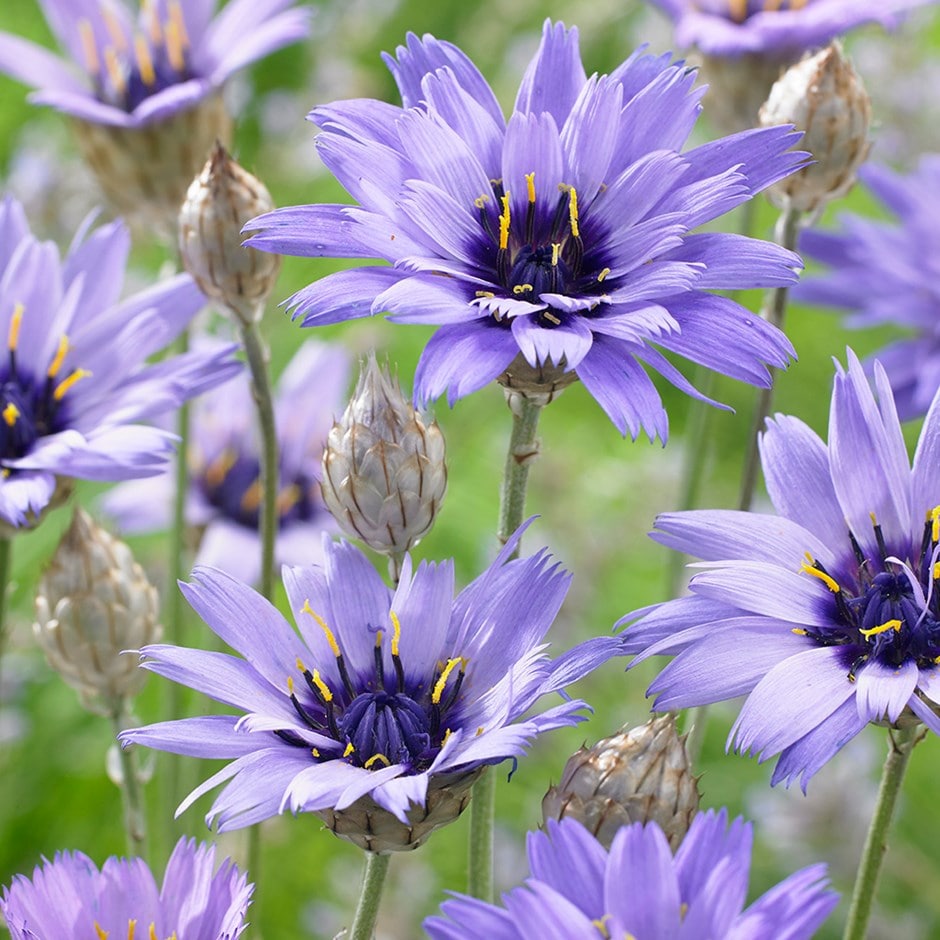Catananche caerulea
blue-flowered Cupid's dart
- 9cm pot
- £7.99
- In stock (shipped within 3-5 working days)
- 3 × 9cm pots
- £19.99
- In stock (shipped within 3-5 working days)
- 2 litre pot
- £15.99
- In stock (shipped within 3-5 working days)
- 6 × 9cm pots
- £34.00 £47.94
- In stock (shipped within 3-5 working days)
- approx 50 seeds
- £2.99
- available to order from late spring
Delivery options
- Standard £5.95
- Position: Full sun
- Soil: Moderately fertile, moist, well-drained soil
- Rate of growth: Average
- Flowering period: July to August
- Hardiness: Fully hardy but short-lived
Strictly speaking this gorgeous plant is a perennial, however it is usually quite short-lived, so it’s best treated as an annual or biennial. The good news is that it will often self-seed if the conditions are right, so more plants will follow on in its place. Sought after for its papery, daisy-like flower heads, which appear above the fine foliage in summer, Catananache is a star at attracting bees and other beneficial insects. These flowers are popular with florists, as they can be added to both fresh and dried arrangements. Even the papery seedheads that develop later are attractive, and these too can be added to a vase.
Plant out into well-drained soil, enriched with compost or other organic matter. Apply a thick winter mulch around the plant to protect from hard frosts. Deadhead regularly to encourage more flowers to form, but towards the end of the season, let the seedheads develop and ripen, as these may go on to produce more plants in subsequent years. Divide in Spring in cold areas, or in autumn in warm areas.
Sow seeds in situ from mid-spring in rows 30cm (12") apart. When the plants have formed their first pair of true leaves, thin the plants to 10cm (4") apart. It is sometimes beneficial to give a little protection from winter winds for the first year with the use of cloches or plant protection fleece. Can be sown earlier under glass for hardening off and transplanting after all risk of frost has passed. Best treated as a short-lived perennial or biennial, it will flower most freely in its second year.
